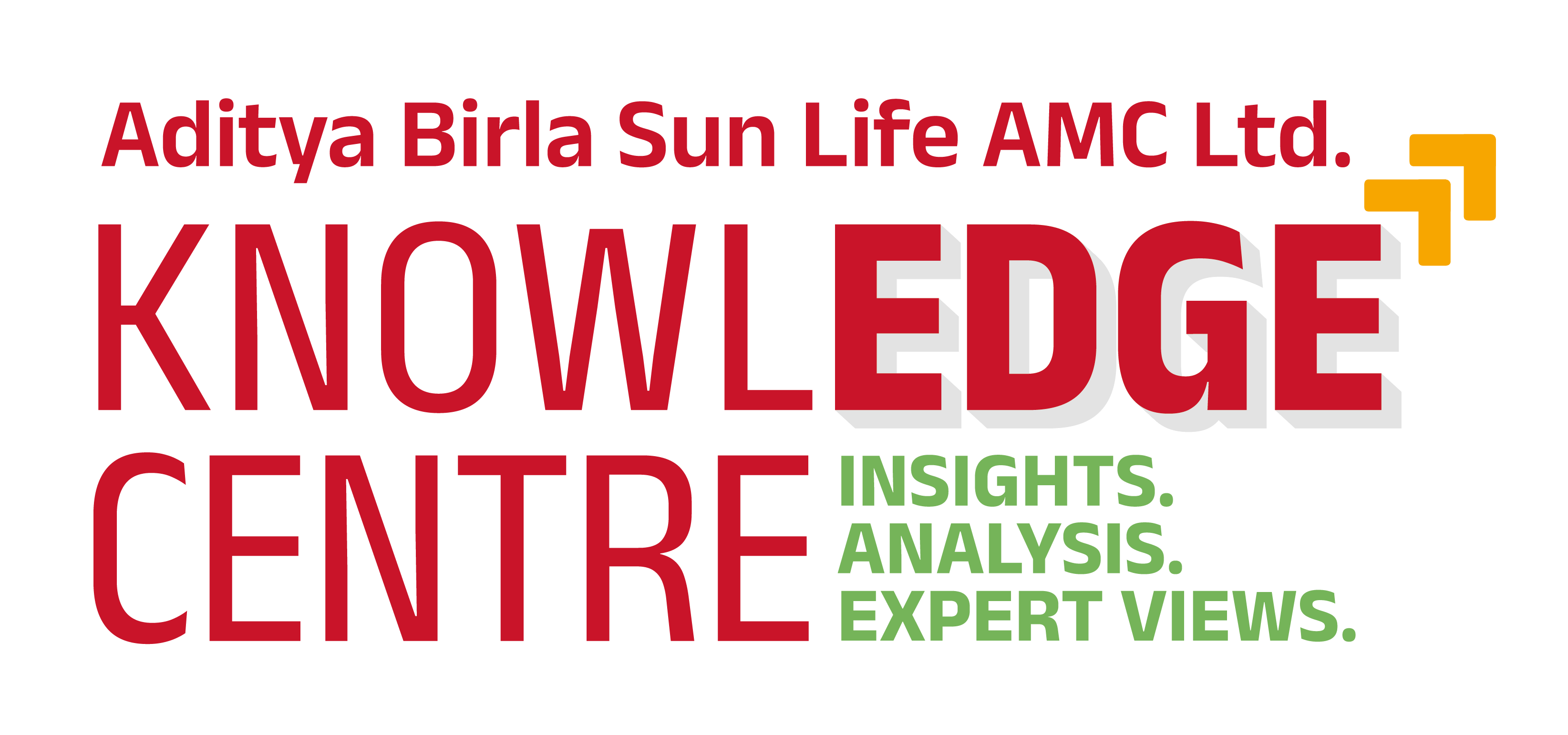-
Our Products
Our FundsFocus Funds
-
Self Care
Self-ServiceFind InformationWays To TransactPartner Solutions
-
Downloads
- Learnings
- About Us
-
More
-
Shareholders
-
Shareholders
-
Updates
-
-
SIP Calculators
- Back
-
Shareholders
Save and Build your Investments with Debt Mutual Funds

Oct 20, 2023
24:28 Mins
 Harshil Suvarnkar
Harshil Suvarnkar
Hello listeners and thank you for tuning in to In Focus. I am your host Amrita Panja and I am in discussion with Harshil Suvarnkar. Harshil brings with him over a decade’s experience in the financial services industry. As someone who takes a top-down approach to managing fixed income portfolios, Harshil has a strong pulse of the macro environment and how to position one’s investments according to it. World Saving’s Day is celebrated in October, and we thought this was a good time to quiz him on how to build a savings culture with an asset class that he dabbles in which is debt mutual funds.
Amrita : Welcome to the Podcast Harshil
Harshil: Hi Amrita it is nice to be here.
Amrita: Now, unlike equity, the conversation around debt mutual funds seems less commonplace and that does leave room for greater awareness of its utility in an investor’s portfolio and ofcourse for more conversations to ensure that there is a deeper understanding of this asset class. So, if you were to give the most simplistic overview of what debt mutual funds are and how they work, what would that be?
Harshil: Sure Amrita. So, debt mutual funds belong to the asset class fixed income, and as, when we speak fixed income, debt mutual funds buy fixed income securities, which means that they have a steady stream of income or a fixed coupon attached to it or maybe a zero coupon instrument where the issuer or the instrument in which you are investing pays you interest compounded at the end of the tenure of the instrument.
So, essentially, Debt mutual funds help you provide a steady stream of income.
Now how are debt mutual funds composed?
So, you know from a debt mutual fund perspective, the benefits that arise from investing in a debt mutual fund versus let's say a traditional savings instrument that you would invest in is first liquidity. So, whenever you want money, on a weekday, if you are redeeming money on a T+1 basis, basically you redeem today, you get money in your bank account the very next day.
So that gives you a good liquidity benefit versus traditional savings instruments where you might have to find a buyer if you're holding an instrument directly in your portfolio or if you're holding a fixed deposit with you, you might have to go to the bank or the, the company with whom you have placed the fixed deposit. To liquidate the same, they might charge you some premature penalty for taking your money out before maturity. So, debt mutual funds provide that benefit of liquidity which is also very important given how financial markets are placed and liquidity being important to us.
Second, from a debt mutual fund perspective, they have mark to market on it. So, let's say you are investing at the peak of an interest rate cycle. So, let's say, somebody invested before COVID when interest rates were higher. During COVID interest rates came down. So, you know let's say interest rates come down by 1% basis the duration which I'll take you through, you get a mark to market benefit in debt mutual fund. So, you earn the coupon or the accrual plus the mark to market gain because of a fall in interest rates which might not be possible in a traditional savings instrument that you might be holding in your portfolio.
Third is diversification. In a debt mutual fund, you are holding many securities, so you get the benefit of diversification and not putting all your eggs in one basket. So, you know you have your portfolio which is diversified, it has various issuers which are there, and it has liquidity which is embedded in the portfolio as per the Sebi guidelines which are given to us.
So, diversification is another key benefit that debt mutual funds have.
Now coming to how the return is composed of, let's talk of a debt instrument. So, in a debt instrument, you will see that the return is composed of, one is the YTM or the accrual.
So basically, let's say you buy a security at 8%, so you earn that accrual over the period of the instrument. So, if you are invested till the maturity of the instrument, you earn 8%.
The second component is the mark to market which we spoke of which is duration. So, let's say you buy a two-year security, and you buy a four-year security. So, practically assuming that the coupon and everything are the same, if interest rates fall by 1% you will make double the gains in a four-year security versus a 2-year security.
So, duration is also important, is what kind of duration meaning what is the kind of maturity that you are running the portfolio from a mark to market perspective, you know if you are investing in a debt mutual funds.
And, the third one is the spread. So, when we say spread, you know I think in financial markets everything is basis demand and supply. So, you know, let's take an example, you know of what has happened recently and because our listeners would be tuned into it is JP Morgan Bond index inclusion for Indian government securities which will lead to a good flow of money into the country and what are they going to invest in?
They are going to invest in our government securities. So, the demand for government securities will increase, and the supply remains the same from the government. So, whenever the passive flows come in, you will see that the yield of government securities will go down versus corporate bonds or any other debt instrument that you will have.
So, that might lead to a spread expansion between government securities and corporate bonds. But government securities rates will go down further, so it may be prudent to be invested in government securities. So, when you invest in debt mutual funds, the fund manager takes care of this, assesses the demand/supply situation, and the macro conditions and accordingly places the asset class basis the scheme’s guideline given by Sebi to ensure that you earn the benefit of the spread change also in the market.
So, the return is composed of an accrual that is the YTM, the duration and the spread change that you would have seen. So that's the three components, levers you can say of how debt mutual fund returns work.
Amrita: Thank you so much for taking us through the dynamics of debt mutual funds. I am sure it would be very useful for our listeners to get a deeper understanding of this asset class.
Now, I'm going to come on to my next question, and this has been one of the most contentious macro factors for the year, a lot of debate, a lot of discussion and conversations around it which is interest rates. Now in the Federal Open Market Committee meeting in September this year, higher for longer was the message that came through. How do you see interest rates play out globally and in India? And as part of this question, with the recent development, which is of the inclusion of Indian bonds in the JP Morgan Emerging Market Bond Index, what sort of implications this can have on rates and the liquidity situation going forward?
Harshil: So, from a rate conditions, let us assess the macro conditions first, as to what’s happening. On a macro piece, you've seen that rates have increased from 0% levels in the DM World, which is the Developed Market world and rates are already seeming to be at restrictive levels over there. If we look at implied real yields, meaning that you know your nominal yield minus the inflation, your real yields are much higher and are at the highest level since GFC (Global Financial Crisis). So, rates seem to be at a level which is restrictive and monetary policy has also done a lot of work till now. So, it seems that we are at peak rates right now in our view. But what are peak rates? So, when we are saying peak rates, is that monetary policy is active, it takes some time for monetary policy actions to work through the economy and policy conditions might not be conducive enough for a rate cut right now, but we seem to be in for a pause and a higher for longer kind of scenario.
So, your rates would be at peak right now, if one invests right now, whenever rate cuts happen in the future, you tend to benefit from it, given that your financial markets price things much in advance before the action happens, so it makes sense to invest at the peak rates, you get the benefit of a higher accrual. Plus, if interest rates come down, you get the benefit of the mark-to-market.
Now what can turn into a condition where rate cuts might happen, you're already seeing some kinds of cracks in the US economy in terms of your money supply or your credit conditions, which means your credit growth. So you are seeing some kinds of conditions even in the job market, you are seeing that it's more of temporary job creation rather than permanent job creation, and when rates are so high, something tends to give up like we saw the banking crisis which happened over there where rates come down and you know things have now improved because the Fed stepped in at that point in time, but you see something or the other incident might happen which might tend to the Fed decreasing rates.
Also, on the inflation front, inflation has come down from peak levels of 9% to around 3.5% right now in the US. Their target is 2%. So the last leg always is difficult for inflation to come down. And while I said that monetary policy actions will flow through the economy and should ideally bring down inflation. As we go ahead in time, so net, net, the message for the developed world macro is that we seem to be at peak rates. We might see at most one last rate hike post that it will be over there, and monetary policy conditions seem to be at least restrictive over there.
Now if we come to India, India is a very particular scenario where our growth is doing pretty good. Our growth figures are good, but we have not yet fully recovered from the COVID drag. So, you know when I say from the COVID drag, if you know our growth were to grow at the same level when COVID was not supposed to happen, we would be a little ahead of where we are right now in terms of the absolute level of our economy and we are still recovering from that.
So, our pace of growth currently is good and growth conditions are really good. On the inflation front also while we saw a temporary spike because of vegetable prices like tomato, but all of that has stabilized. If you look at the September figure which came in, our headline CPI came in at 5.02% and our core inflation came lower at 4.5%. Now core has been trending lower and that is very positive for us in terms of our inflation going ahead, we feel that core inflation can trend down further, a little lower and things seem to be right in terms of inflation which will not coax RBI to at least do rate hikes in India. While they might track the global economic conditions and global monetary policy actions, there is no need for a rate hike as such in India and India is already at peak rates.
So, while other policy measures might come in, in terms of keeping liquidity a little tight. But then overall, we see that India rates also are peak-ish and it is a good time to invest in India also. Plus what we saw is JP Morgan's bond index inclusion, which we believe will lead to about 30 to 35 billion at least of flows into India, and now if that kind of flows come in while the index starts from June 2024, those passive flows will lead to a significant demand which can bring down yield levels as we have seen in the past, you know you've seen that 41 basis points is the average decrease in rates whenever the index inclusion has happened across the other economies. So, we believe that it's a good time to take benefit of it. One should invest in portfolios which are heavy on these government securities and take benefit out of JP Morgan's bond index inclusion. We also see that Bloomberg might also include India in their bond index. If that happens, it will be an additional $20 billion of flows which will be like icing on the cake and which can bring yields further down at least for government securities in India.
Amrita: You have given me a good segue into my next question actually, then given the current environment, how should investors position their portfolios?
Harshil: That's a very interesting question, but let's try and break the categories and let's see as to what investors should do. So, of course from the index inclusion piece and the macro conditions evolving, one should try and lock in a little longer duration than what maybe somebody's horizon is you know if let's say you are a long-term investor.
But you know let's break the categories and see as to how things are spanned up. You know you have in your overall debt category something as overnight and liquid funds which stack up against maybe it's like a parking instrument so or overnight funds, liquid funds, low duration funds, your ultra short term funds are like parking kind of funds where your fund requirement is, is there after a certain period of time it's like a parking facility for investors and you tend to get good advantage.
And given that short-term rates are higher, it makes sense for investors to park their surpluses in these categories of funds. Then you have the short-term category which includes your corporate bond fund, banking PSU and short-term fund. Which are like for a medium like one year plus kind of horizon if investors have investors can look to invest over there. And then you have your categories which are like medium duration, which is a medium-term plan, your credit risk funds which are more taking a little bit of credit into the portfolio, their accrual is a little higher. So, if investors have kind of a horizon of two plus years, you know, one can look at over there. And of course, from an index inclusion point of view, we have some of the target maturity funds which have predominantly the FAR securities which is a fully accessible route securities where FPIs can invest in. Investors can either invest in the 28-29 or a 10 year kind of index maturity funds which hold these FAR securities or look at investing in gilt, income or kind of long-duration funds to take maximum benefit of this position that we are in right now.
Amrita: OK. So then from what you said, let's break it down in terms of for our listeners the different categories of debt mutual funds you mentioned according to the different financial goals somebody may have, say an emergency fund or a regular income flow.
Can you help break it down for us for a better understanding?
Harshil: I think that's a very good pertinent point. Like I said your overnight and liquid funds are good alternate between your savings kind of a deposit or your current account where savings rates in at least the majority of banks that you would see would be close to about three quarter whereas the YTM of these funds might be higher. Whilst a liquid fund would be susceptible to mark to market. Historically if you were to see you know overall category would have outperformed your savings in the bank by a huge margin. So, one can look at these funds, also I said that you know let's say from a portfolio allocation point of view of course that is important. But let's say you are trying to kind of time the equity market and want to invest temporarily for some time, you have your ultra short or your low duration category which somebody can invest in, you know where the investment or the duration of the fund is restricted to up to one year. Then you have your floating rate category. The floating rate category also invests predominately in floating-rate bonds. So, it kind of tries to play the interest rate cycle via floating rate instruments. So that fund also should do well for investors looking for kind of a one-year horizon. Then like we said you have your corporate bond fund which invests predominantly in corporate bond funds or your banking PSU debt fund which invests predominantly in PSU and banking papers. So, you know if somebody is looking for that kind of an asset class of where one wants to invest in, you know you can look at over there or you have your short-term fund category which has the flexibility to move through instruments and like we said that you know fund manager tries to capture the spread between instruments. So, you know short-term funds can be looked for that kind of a play.
Then we have your credit risk or your medium-term funds which take a little bit of credit and when you invest in some credit you tend to have a little higher accrual. So of course, your spreads can move, and you'll have a mark-to-market risk. But then given the high accrual you know if investors are looking at that kind of a segment, then investors going to look in over there, then you have your gilt and income category which invests in a little bit higher duration. You know so if investors have a little higher horizon and let's say if somebody like we just spoke of the index inclusion or how things will pan out for India post the flows come in, those funds are better positioned for investors wanting to then take this call or maybe a long duration fund; long duration fund by the name has a minimum duration of seven years. So, you know those funds will have a little higher duration and if you're trying to play the interest rate call and have a little higher horizon then that fund is also well positioned for investors to take benefit from.
So that's the broad category that we have in debt mutual funds.
Amrita: My final and closing question to you would be to understand the best practices followed by Aditya Birla Sun Life Mutual Fund in its debt fund management. So, Harshil if you could throw some light on that?
Harshil: Sure Amita. So, from our perspective you know, from a fund management team or you know what we do is we take a top-down kind of approach in terms of investing and our investing philosophy. We look at the macro conditions. So, each macro variable is tracked very closely within the team be it inflation, growth, fiscal, geopolitical events or any other event is very closely tracked within the team, basis that we arrive at a call in terms of what needs to be done on an overall portfolio level in terms of the duration that we need to take.
Then we go into a kind of a micro or the market analysis in terms of demand and supply of various instruments, where is the instrument right now, what have been the historical spreads and basis that we arrive at what should be kind of a portfolio construct. Now basis that portfolio construct, each fund manager tries to build the portfolio, try and get the maximum out of the dealing in these and getting these at the perfect levels from the market and that is how the overall portfolio is constructed.
So, you look at macro then you look at the micro market in terms of demand-supply, in terms of what were the historical spreads, what we expect the spreads to be in terms of overall credit. When we say credit, each issuer's limits are set by the credit team. The credit team looks at overall all the issuers. We have an investment committee, we have a risk management committee in place where each issuer is assigned a specific limit, specific tenor of what we can take, and what we cannot take based on the analysis done by the credit team and then presented within the investment committee and those limits are then approved and only post that you know any issuer goes into the portfolio.
So those are the kind of best practices that we follow. From a risk management perspective, you know the portfolio is closely tracked and we try and do kind of a quarterly analysis on all of the issuers that we have. And any of course news flow is tracked very closely by the analysts in the team who look at specific news flow on a sector on a credit. And especially sectoral research continues to be done throughout the year to understand what are the sector and nuances developing or whether there should be any change in the portfolio strategy or whether we should go any underweight any sector, overweight any sector or overweight any issue or underweight any issuer in terms of let's say if any rating upgrade is expected or if we feel that the deterioration financials or any other condition is expected, should we trim down exposure to that issuer.
Amrita: Thank you, Harshil, for sharing these invaluable insights and thank you to our listeners. I'm sure this will be useful for them to understand the intricacies of debt mutual funds and how they can build a robust portfolio by adding this asset class.
Data mentioned is from ABSLAMC Research. The views expressed in this podcast are for knowledge/information purpose only and is not a recommendation, offer or solicitation of business or to buy or sell any securities or to adopt any investment strategy. Aditya Birla Sun Life AMC Limited (“ABSLAMC”) /Aditya Birla Sun Life Mutual Fund (“the Fund”) is not guaranteeing/offering/communicating any indicative yield/returns on investments. The sector(s)/stock(s)/issuer(s) mentioned do not constitute any research report/recommendation of the same and the Fund may or may not have any future position in these sector(s)/stock(s)/issuer(s). Unlike traditional saving instruments, investments in Mutual Funds are subject to market risks.
Hence, the performances are not strictly comparable.
Mutual Fund investments are subject to market risks, read all scheme related documents carefully.
You May Also Like
Loading...





 1800-270-7000
1800-270-7000










